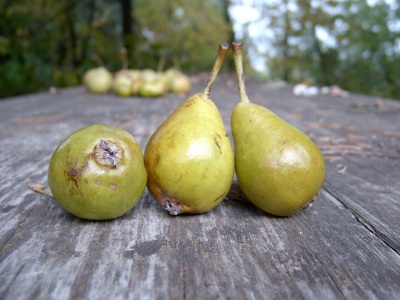︎︎︎ PERA CANE

Le piante madri sono state ritrovate nel comune di Pietralunga (PG). Era diffusa anche nelle vicine Marche. Può essere adatta alla coltivazione nelle zone di alta collina. L’albero è mediamente vigoroso, rustico e a portamento assurgente, è molto produttivo e fiorisce tardivamente. Questa pera è piccola, perfettamente piriforme, con il peduncolo corto e mediamente grosso. La cavità calicina è sporgente. La buccia è molto spessa, di colore verde brillante, lucida, al tatto liscia, perché le lenticelle sono assolutamente assenti. La polpa è bianca, poco succosa, con granulosità accentuata. I frutti vengono raccolti alla fine di novembre, dopo che hanno avuto qualche brinata, e qualche volte anche la neve, e si ripongono nella paglia per farli ammezzire, in quanto solo così si mangiano e sono molto dolci .
E’ un frutto molto rustico e serbevole. Adatto alle conserve e alla cottura sotto la brace, con un pizzico di zucchero sopra, si può gustare anche cotto nel vino e miele.
The mother plants were recovered in the mountains near Pietralunga (Perugia), but it was also widespread in the neighboring Marche. It would be suitable for cultivation in the high hills areas. The tree is moderately vigorous and hardy. It has almost compressed habit, is very productive and blooms late. The fruit is small, perfectly pear-shaped, with a medium-short and medium-thick stem, symmetrically inserted at the top. The calyx is absent, in fact almost bulging. The skin is very thick, a bright green, shiny, smooth to touch and with no lenticels at all. The flesh is white, not too juicy and very granular. The fruits of this variety are harvested at the end of November, after having had a few frosts and even snow. They are stored in the straw to make them soft: only at this stage can they, in fact, be eaten. They are very sweet. It is a very hardy and well storing fruit. It is suitable for jams and for cooking in the coals, sprinkled with sugar on top. It is also good for cooking in wine and honey.